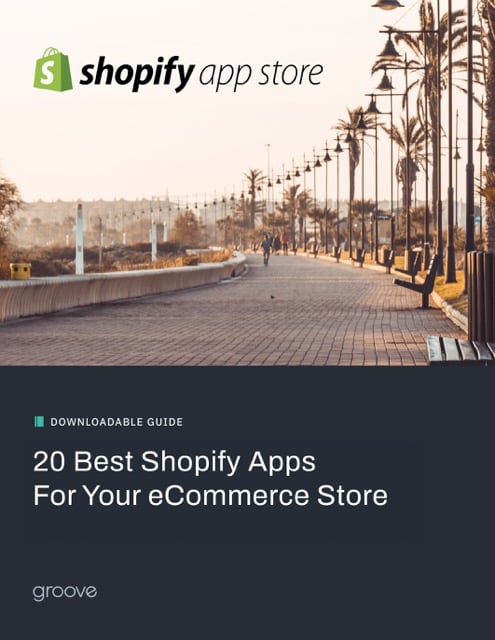Building an eCommerce site is a different process for every business depending upon the vertical they operate in. For example, the technical needs of a software company are much different than that of a business selling bicycles directly to consumers. For this reason, we’re sharing an in-depth eCommerce development checklist to outline the proper steps to building an eCommerce website.
What is an eCommerce Development Checklist?
This list will serve as your “source of truth” to ensure your website executes its functions correctly and serves your business goals. This checklist includes tasks involving the website’s objectives, how customers interact with the site, and technical backend logistics.
Step 1: 10,000 Foot View
The 10,000-foot view refers to looking at an eCommerce website holistically from the consumer's perspective. Begin by asking yourself some basic questions such as:
- How will customers find my website?
- How do I want customers to interact with the website?
- How will my customers contact me regarding an issue or question?
These questions will help you to define the specific website pages that will need to be built and how they should be laid out for a proper user experience.
What Are Your Website Goals
The purpose your website serves determines what website pages are implemented as well as the navigation system which will allow users to find those pages. Suppose you are a clothing brand that sells athletic apparel to both men and women. From your home page, users will need to easily navigate to the men’s or women's section with subcategories that will contain the individual piece of clothing.
This same category structure will not work for a company providing specialized plug-ins for musicians in recording studios. In the case of a software company, your categories will need to be laid out by operating system or functionality.
The Customer’s Journey
The customer's journey refers to every step that a user takes from first discovering your brand to completing a transaction. Your website pages should reflect the journey that you intend your customers to take.
If you launched a paid search campaign using Google Display Ads, you will need to direct users to a specialized landing page that continues the messaging they received in your advertisement. From this landing page, users will need to have a clear call-to-action that will direct them to the products or services from your paid ad.
After finding the product they are interested in, you may want to display modules such as similar items or “users who bought this product also bought…” These act as upsells to the customer. We generally recommend that these modules are displayed on product detail pages rather than the checkout page to avoid distracting customers during the checkout process.
Step 2: Website Design
All eCommerce merchants want an intuitive, beautifully designed website. However, it is nearly impossible to design until there is a plan in place for the content that the website will display. Let’s discuss four of the most important things to create when getting started with eCommerce development.
Create A Sitemap
You have reached the stage where it is appropriate to begin laying out the structure of your website’s pages. We find it helpful to imagine your website as a flowchart with users entering via your homepage or a landing page and exiting via the checkout procedure. Layout your website in a way that requires the fewest amount of clicks from a potential customer in order to remove any friction from the purchase process.
Homepage
The homepage serves as the first impression for new website visitors. Depending upon the products and services offered, the modules leveraged on this page will vary greatly. We generally recommend a small navigation and search menu across the top, with a large hero image containing a call-to-action that will grab the user's attention. Beyond those pieces of content, you will need to decide if you would like to tell a company story, show off your top products or show off an organic photo or video content.
Category Pages
Category pages are one of the most important sections of an eCommerce website. Users should be able to clearly navigate to the products they are looking for without having to hunt through dozens of subcategories. Break your products and services into the least amount of categories possible to start, and only break down categories further when absolutely needed.
Product Description Pages
Product description pages, also known as product detail pages, are the singular pages dedicated to a single product. These pages should include photos, videos or a 360 degree view of your product in order for the customer to become acquainted with it. In addition to a title and short description, you may want to include a long-form description in addition to reviews or testimonials depending upon the pricing and position of your offering.
Checkout
The checkout procedure is an often overlooked aspect of an eCommerce site. If a customer has added a product to their cart, the only barrier to completing the transaction is the checkout procedure. We always recommend that our clients utilize a single-page checkout procedure in order to keep the customer on track.
You will need to decide what information, if any, outside of the shipping and billing address you would like to collect about your customers. We find that in order to achieve the highest conversion rates, the checkout procedure should be as minimal as possible. This may be difficult for businesses that have specific shipping procedures for frozen or perishable goods.
Technical Development Checklist
Once all of these steps are completed, you’ll have a better understanding of what your website will look like and how it will operate. The final step to launching your eCommerce store is ensuring the backend operates correctly.
Platform & Hosting
Your eCommerce platform will serve as the backbone of your online sales. An inexpensive, less-supported eCommerce platform may lead to major issues as your business grows. We recommend taking your time and doing your research before committing to an eCommerce platform or website hosting provider to ensure that all capabilities you need can be achieved.
Native Integrations
Native integrations have become a large focal point for eCommerce platforms and eCommerce retailers alike. The two most common integrations that retailers leverage in their websites are payment processors and shipping. The payment processor, also referred to as payment gateways, determines the cost associated per transaction and protects your business from internet fraud.
Support
A customer may view your product online, place their order, but then realize they have an unanswered question. If the customer is unable to resolve their issue either through a dedicated support page, they may not feel confident in your brand and cancel their order. A poor customer support experience is a common way that customers may turn sour on your brand.
Take the time to find a customer support solution that fits well into your current business operations. In addition to an escalated phone support line, we recommend utilizing a live chat feature to resolve issues quickly without needing to allocate full-time resources to providing support via a phone call.
Make It Your Own
Your website should reflect what makes your business special. No two websites should look identical, so spend time on what you can do to stand out from the crowd. Use the information above to build your own eCommerce development checklist and refer back to it throughout the entire website design and development process. Websites are not static, and assessments should be made on a regular basis to identify opportunities for improvement.
Would you like a team of designers and developers at your disposal to help you execute your eCommerce development checklist? Use the form below to speak with one of our eCommerce specialists to learn how we build, design and grow eCommerce websites for mid-market and Enterprise brands in every vertical.

E-BOOK
20 Best Shopify Apps For Your eCommerce Store
Explore tags:
About the author
Subscribe to the Groove Newsletter
Get the latest updates and insights straight to your inbox



